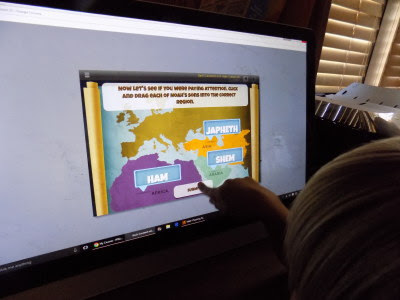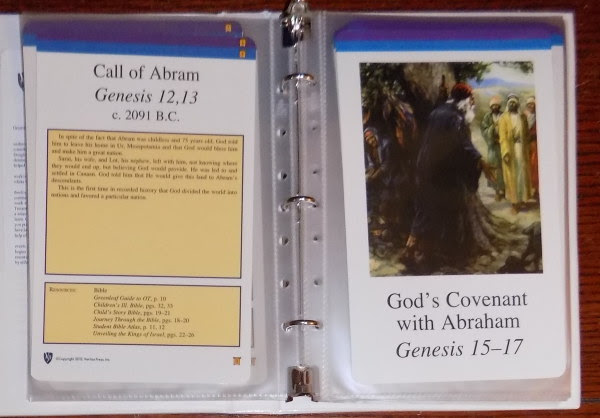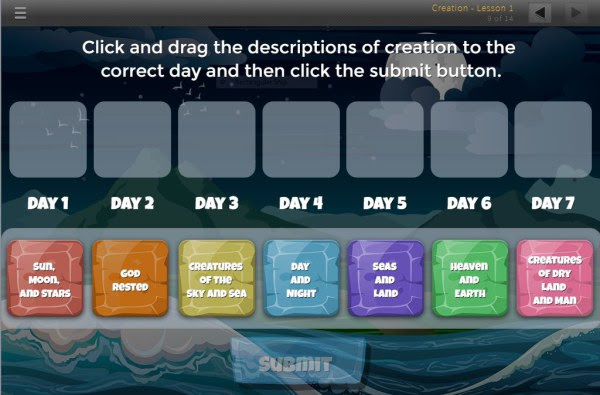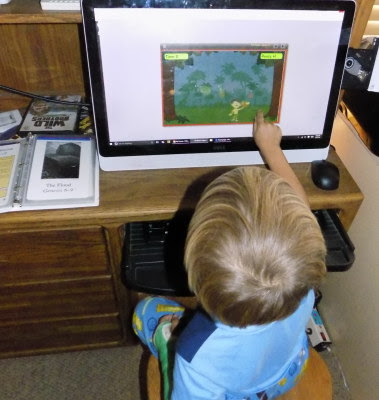
When I first started our homeschool journey, the one curriculum I heard praised over and over was the elementary science series by Jeannie Fulbright published by
Apologia Educational Ministries. I was eager to get started with it as soon as possible, so when Ian was in Kindergarten I jumped into the book on astronomy. However, it proved to be a bit much for him at that age, so we stopped partway through the book. Several times I’ve considered picking it up again, and Ian has asked when we were going to finish it, but the time never seemed quite right until now. Apologia just came out with
Exploring Creation with Astronomy, 2nd Edition, and I was eager to dive back in and see what changes had been made.
About Exploring Creation With Astronomy, 2nd Ed.
We received the following:

The
Exploring Creation series is unabashedly Christian. Each chapter of
Exploring Creation With Astronomy features Bible verses and discussion about how God designed the universe. Fulbright also makes a point of sharing information that refutes claims by secular scientists that do not line up with biblical truth. For example, in the chapter on the sun, she points out that if the earth were actually billions of years old, the sun would have been so dim or faint at that time it could not have provided enough warmth for life.
Each chapter contains text, pictures, activities, “Think About This” sections which expound upon the text, and questions to prompt the students in narrating back what they have learned. The activites are usually fairly simple and utililize items that are easy to obtain (or you might already have lying around the house). For example, to demonstrate how the moon reflects the suns light rather than being a source of light itself, the book had us use a CD to create a reflection. The boys loved moving the CD around and watching the reflection dance around the room!

Both notebooking journals provide daily lesson plans with checklists of what should be completed each day. There are 72 days’ worth of lessons in this schedule, so if you do 2 lessons a week, you can get through the book over the course of one school year (36 weeks). Though these suggestions are helpful, of course you can choose a pace that works best for your family.

Most of the pages in the two notebooks contain the exact same activities, with a few minor differences. The lines given for writing in the junior notebook are wider spaced and have a dotted middle line to make it easier for younger students to form letters correctly. Also, on the crossword puzzles, the first letter of each word is filled in to give the younger students a head start. Finally, at the end of each lesson, the older students’ notebook has a page with questions for them to write what they remember, as well as a place to record their favorite part of the lesson, whereas the junior notebook has two coloring pages instead.

The audiobook breaks down each lesson into separate components, following the sections listed in the daily lesson plans. The book is read by the author, Jeannie Fulbright, who really brings each lesson to life with her pleasant, friendly voice. The conversational tone of the written book becomes even more casual as she reads, making it feel like you’re just listening to a friend explain a fascinating concept. The instructions for the activities are NOT read; the audiobook simply tells the listeners they can now complete the activity on a given page in the textbook.
Comparing the 1st and 2nd Editions
Right off the bat, I could see some differences between the old edition and the new. The 2nd edition textbook has more pictures and less text on each page. Activities are more set apart from the text visually.

The notebooks are now full color on every page, rather than just the mini-books. In the old notebook, the parts to cut out for booklets (similar to lapbook components) were all at the back of the book, but now they are right in order with the other lesson pages.
There is also now a complementary Apologia Astronomy Science Kit, which has the materials needed to complete most of the 42 activities in the text, as well as 21 additional bonus activities. We did not receive this kit, so I can’t speak to its contents, but it sounds like an easy way to do the activities without having to gather materials, as well as being a great resource for students who want to go even deeper in their study.
Our Experience
Because we had already covered the first few lessons the first time we used this curriculum, I decided to cruise rather quickly through the first part of the book without doing most of the activities. We listened to the audiobook in the car (best to do with the book in hand, since the author refers to many of the pictures as she reads). The audiobook is a fantastic addition, and I found it was helpful to use on a regular basis. Ian is a strong auditory learner, and he did really well listening as he jotted down notes and drew illustrations in his notebook. This alone made we want to come back to Apologia. Ian could go through this course almost independently thanks to the audiobook. (I don’t know if they had one with the first edition or not, but from now on I will make sure I get one when it’s available!)
As we listened to the audio book I followed along in the old edition to see what changes had been made, and there are several things I absolutely LOVE about the new edition. The main reason we had abandoned the first edition back when Ian was six was because it was just too wordy for him. In the new edition, almost every paragraph has seen cuts and is much more concise. Before, I felt a little overwhelmed at how much I needed to read with Ian each day to keep on pace to finish the book in a year. This time I was actually surprised at how quickly we got through each day’s lesson. Yes, he’s older now, but I would feel much more comfortable using this with a Kindergartener now. (Though there’s so much “meat” in the book, it really is a quality curriculum for all the way through the elementary grades.)
I like the new breakdown of lessons into daily schedules (provided in the notebooking journals, not the textbook). Although the old notebook did this to some extent, the new format is much easier to follow and check off each activity as it is completed.
 We didn’t do all the activities in the notebook (we skipped the copywork because my boys are already doing other copywork and they find it tedious), but we did enjoy the other pages. I especially liked the “mini-books,” which are like lapbook components that the students cut out, write in, assemble, and then attach to pages within their notebook so when the student has finished the course they will have an extensive collection of work all in one spiral bound book. Having the pages in order in the new edition got my boys excited as they saw what was coming up, and these were a wonderful way to keep them learning while giving them something active to do.
We didn’t do all the activities in the notebook (we skipped the copywork because my boys are already doing other copywork and they find it tedious), but we did enjoy the other pages. I especially liked the “mini-books,” which are like lapbook components that the students cut out, write in, assemble, and then attach to pages within their notebook so when the student has finished the course they will have an extensive collection of work all in one spiral bound book. Having the pages in order in the new edition got my boys excited as they saw what was coming up, and these were a wonderful way to keep them learning while giving them something active to do.
Final Thoughts
Apologia has taken a good curriculum and made it even better! The newly designed pages draw the students in without overwhelming them, and the colorful, eye-catching notebooks help them get the most out of each lesson in a fun, creative way. We’re looking forward to spending more time in Exploring Creation With Astronomy, and there’s a good chance we’ll be coming back to this series to learn about other science topics as well.

















 We didn’t do all the activities in the notebook (we skipped the copywork because my boys are already doing other copywork and they find it tedious), but we did enjoy the other pages. I especially liked the “mini-books,” which are like lapbook components that the students cut out, write in, assemble, and then attach to pages within their notebook so when the student has finished the course they will have an extensive collection of work all in one spiral bound book. Having the pages in order in the new edition got my boys excited as they saw what was coming up, and these were a wonderful way to keep them learning while giving them something active to do.
We didn’t do all the activities in the notebook (we skipped the copywork because my boys are already doing other copywork and they find it tedious), but we did enjoy the other pages. I especially liked the “mini-books,” which are like lapbook components that the students cut out, write in, assemble, and then attach to pages within their notebook so when the student has finished the course they will have an extensive collection of work all in one spiral bound book. Having the pages in order in the new edition got my boys excited as they saw what was coming up, and these were a wonderful way to keep them learning while giving them something active to do.

 Level 1
Level 1






 The “Go Squish” cardgame we received is one of those activities. Similar to “Go Fish,” the game is played using vocabulary cards. At Level 1, the students just say the vocabulary words (“Desayuno?” “No desayuno.” At Level 2 they use complete sentences (Tengo desayuno. Tienes desayuno?” “No, no tengo desayuno. GO SQUISH”).
The “Go Squish” cardgame we received is one of those activities. Similar to “Go Fish,” the game is played using vocabulary cards. At Level 1, the students just say the vocabulary words (“Desayuno?” “No desayuno.” At Level 2 they use complete sentences (Tengo desayuno. Tienes desayuno?” “No, no tengo desayuno. GO SQUISH”).
















 We have used CTCMath in various ways over the years, sometimes as a supplement, other times as our sole curriculum, and there are so many things great things about it. The video lessons are easy for the boys to understand and I love that they can work independently. It’s also really helpful to have access to all the grade levels, because at times I’ve had both of them working either ahead of their current grade level or going back to an earlier grade to review. Their
We have used CTCMath in various ways over the years, sometimes as a supplement, other times as our sole curriculum, and there are so many things great things about it. The video lessons are easy for the boys to understand and I love that they can work independently. It’s also really helpful to have access to all the grade levels, because at times I’ve had both of them working either ahead of their current grade level or going back to an earlier grade to review. Their 







 I presented the whole subject as if we were working with a code, and we needed to figure out the messages written in Latin, and figure out how to put our own messages back into the code. Right from the very first lesson, the boys caught on quickly and enjoyed figuring out the Latin words in the reader.
I presented the whole subject as if we were working with a code, and we needed to figure out the messages written in Latin, and figure out how to put our own messages back into the code. Right from the very first lesson, the boys caught on quickly and enjoyed figuring out the Latin words in the reader.















